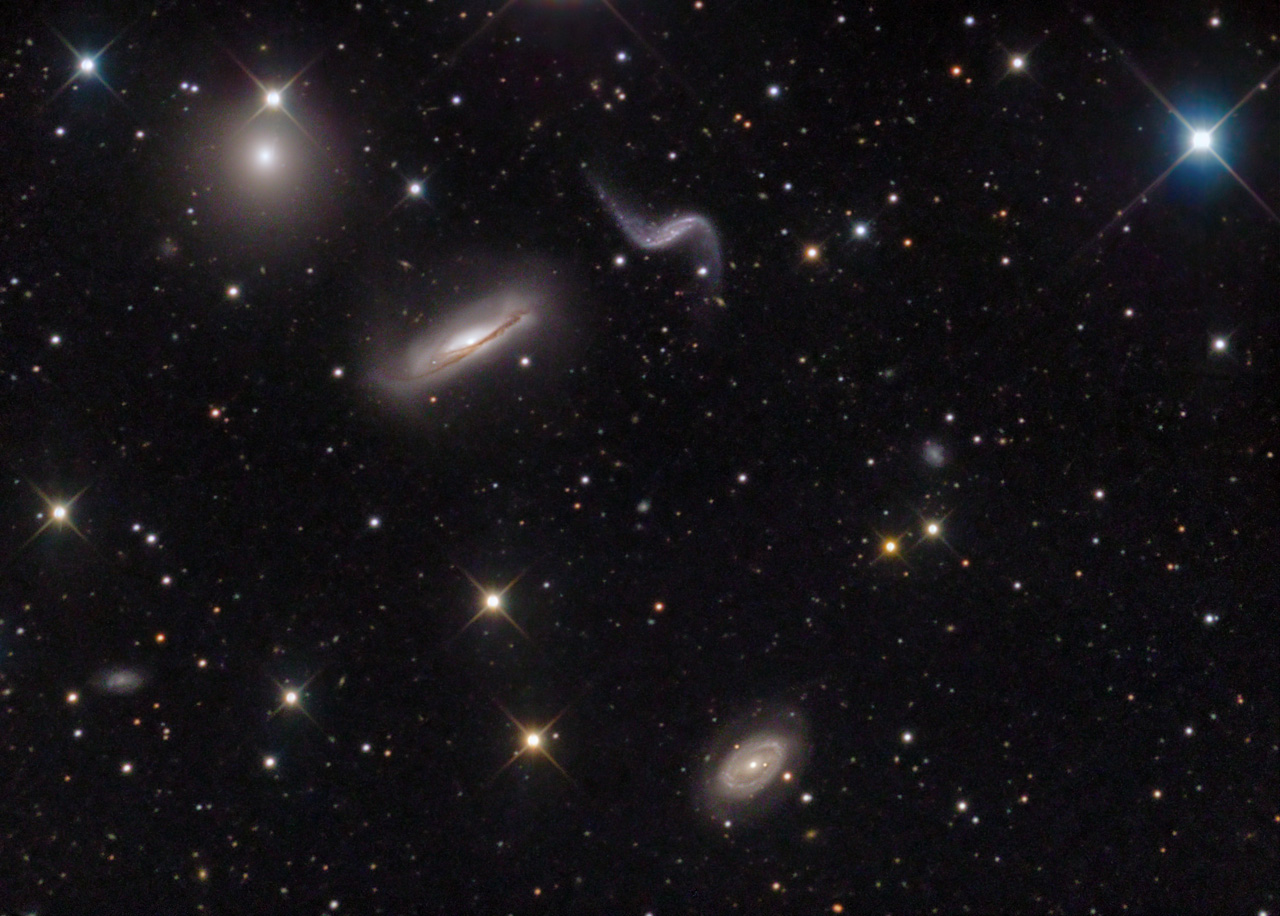
Credit & Copyright: MASIL Imaging Team
Explanation: Galaxies, like stars, frequently form groups. A group of galaxies is a system containing more than two galaxies but less than the tens or hundreds typically found in a cluster of galaxies. A most notable example is the Local Group of Galaxies, which houses over 30 galaxies including our Milky Way, Andromeda, and the Magellanic Clouds. Pictured above is nearby compact group Hickson 44. This group is located about 60 million light-years away toward the constellation of Leo. Also known as the NGC 3190 Group, Hickson 44 contains several bright spiral galaxies and one bright elliptical galaxy on the upper left. The bright source on the upper right is a foreground star. Many galaxies in Hickson 44 and other compact groups are either slowly merging or gravitationally pulling each other apart.

7 comments:
Oh, my, another lovely shot!
Thanks, Eyes!
tmw
Kinda makes me wonder which came first... the black hole or the galaxy that surrounds it.
Genesis 1
"The Beginning
1 In the beginning God created the heavens and the earth.
2 Now the earth was formless and empty, darkness was over the surface of the deep, and the Spirit of God was hovering over the waters.
3 And God said, "Let there be light," and there was light."
Does that help?
Wow! It makes you feel really tiny!
No.
Supermassive black holes containing millions to billions of solar masses are believed to exist in the center of most galaxies, including our own Milky Way. They could have been formed in one or more of the following ways:
1) via gravitational collapse of a dense cluster of stars;
2) by large amounts of mass accreting onto a smaller "seed" black hole;
3) by repeated fusion of smaller black holes.
A black hole has no color or temperature, and it is impossible to tell the difference between a black hole formed from a highly compressed mass of normal matter and one formed from a highly compressed mass of anti-matter.
There is considerable speculation both in science and science fiction as to why the observable universe is apparently almost entirely matter, whether other places are almost entirely antimatter instead, and what might be possible if antimatter could be harnessed, but at this time the apparent asymmetry of matter and antimatter in the visible universe is one of the great unsolved problems in physics. Possible processes by which it came about are explored in more detail under baryogenesis.
In physical cosmology, baryogenesis (also referred to as Baryon genesis) is the generic term for hypothetical physical processes that produced an asymmetry between baryons and anti-baryons in the very early universe, resulting in the substantial amounts of residual matter that comprise the universe today.
And so the galaxies "could" have formed around primordial black holes (perhaps the universe's anti-matter) OR from matter collapsing out of an existing group of stars.
The Platonist in me would like to believe its' the former, which could then be used to explain the concept of non-existance described in Plato's "Sophist".
I still wouldn't explain how G_d put the two together, though. ;-)
I'd like to think that these "anti-matter" black holes are "vacuuming up" all the residual matter in the universe into some absolute "Power" realm and that the idea of an "expanding" and "accelerating" universe thereby is a moot point.
...but I'm no scientist. Just a "trekkie".
Post a Comment